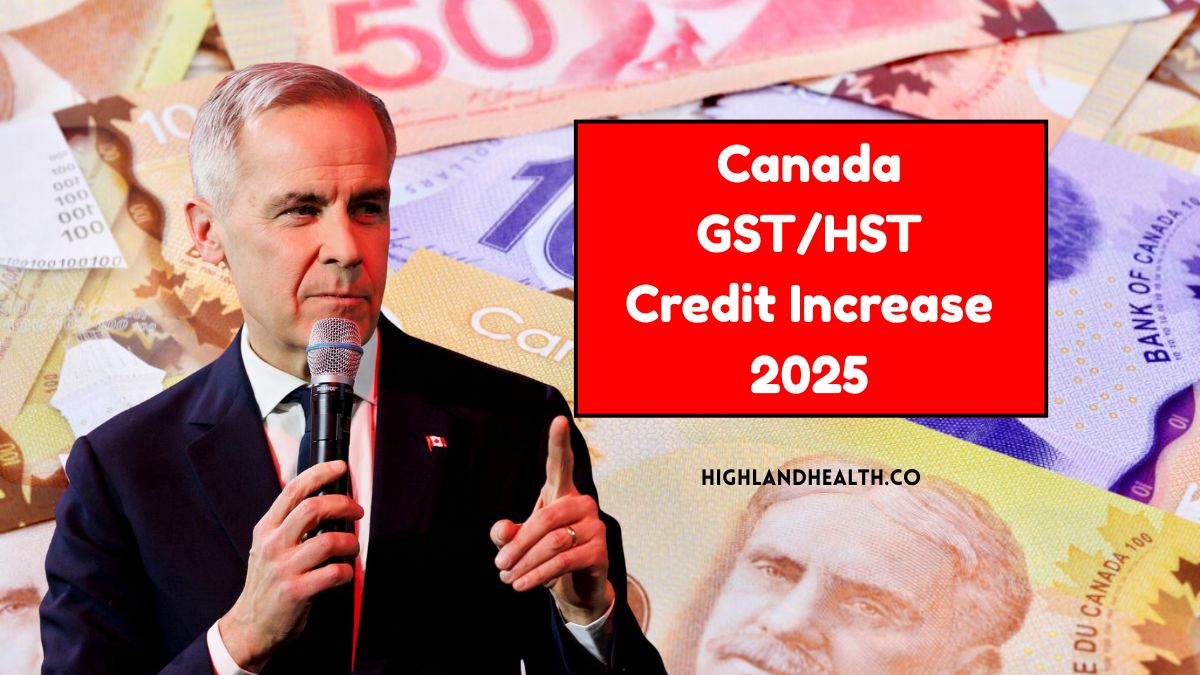As of mid-2025, the Canada Revenue Agency (CRA) has announced a modest yet significant 2.7% increase in the GST/HST Credit. This payment helps low- and modest-income individuals and families reduce the burden of federal sales tax.
The increase reflects the latest inflation trends, providing relief to those struggling with rising living costs. For many Canadians, this increase, while smaller than last year’s 4.7% hike, will still offer valuable financial assistance.
In this article, we’ll break down updated payment amounts, the eligibility criteria, and the process to receive this benefit in 2025.
What is the GST/HST Credit?
The GST/HST Credit is a tax-free payment issued quarterly by the CRA. It is designed to offset the GST/HST that lower-income individuals and families pay on goods and services.
- No application required: Canadians don’t need to apply for the credit if they file their tax returns. The CRA automatically assesses eligibility.
- Non-taxable payments: This is a tax-free benefit, ensuring financial relief without extra tax burdens.
How It Works:
- The credit is based on your income and family status.
- It is paid quarterly, with no extra paperwork required once your eligibility is confirmed.
2025 GST/HST Credit Changes: Payment Breakdown
Starting July 2025, the GST/HST Credit will increase by 2.7%. Below is a comparison of the payment changes from 2024 to 2025:
| Recipient Type | 2024 Amount (CAD) | 2025 Amount (CAD) | Change |
|---|---|---|---|
| Single Individual | $340 | $349 | +$9 |
| Per Eligible Child | $179 | $184 | +$5 |
| Couple (Combined) | $680 | $698 | +$18 |
| Single Supplement | $179 | $184 | +$5 |
Example:
- Family of Four (two adults, two children): Up to $1,066 annually ($266.50 per quarter).
- Single Parent with One Child: Up to $533 annually ($133.25 per quarter).
Eligibility for the GST/HST Credit
To qualify for the GST/HST Credit, you must meet the following conditions:
- Canadian resident for income tax purposes.
- 19 years or older (or have a spouse, partner, or child).
- File an income tax return.
- Meet income requirements based on your Adjusted Family Net Income (AFNI).
If you’re new to Canada and haven’t completed a full tax year, you must manually apply using CRA Form RC151 during your first year. After that, the CRA will automatically assess your eligibility based on your tax return.
Income Thresholds and How They Affect Payments
The amount you receive is based on your income level. The CRA sets annual thresholds to determine eligibility, which are adjusted to account for inflation.
| Income Category | 2024 Threshold (CAD) | 2025 Threshold (CAD) | Increase |
|---|---|---|---|
| Phase-in for Single Credit | $11,039 | $11,337 | +$298 |
| Phase-out Start for Families | $44,324 | $45,521 | +$1,197 |
- Full credit: If your income is below these thresholds, you will likely receive the full GST/HST credit.
- Partial credit: If your income exceeds these thresholds, the amount gradually reduces until it phases out entirely.
Payment Dates for the GST/HST Credit
The GST/HST Credit is issued four times a year, on the 5th of July, October, January, and April. If the payment date falls on a weekend or holiday, it will be issued on the nearest business day. This ensures timely payments for eligible Canadians.
The 2025 GST/HST Credit increase provides essential relief for Canadian families and individuals dealing with the ongoing rise in living costs. With a 2.7% increase, the credit will provide modest but necessary support.
Ensure that you meet the eligibility requirements to automatically receive your quarterly payment and take advantage of this benefit in 2025.
FAQs
How much will I receive in 2025 for the GST/HST Credit?
The amount depends on your income and family status. For a single individual, it will be $349 per year, while couples may receive $698 combined.
Do I need to apply for the GST/HST Credit?
If you file a tax return, the CRA will automatically assess your eligibility. Newcomers must apply manually in their first year.
When will I receive the GST/HST Credit payments in 2025?
Payments are issued on the 5th of July, October, January, and April. If the date falls on a holiday, it will be issued on the nearest business day.
